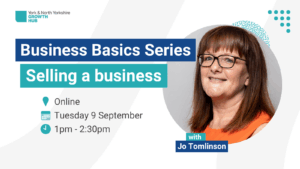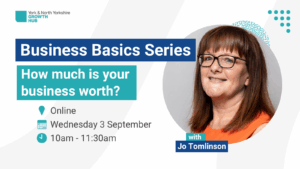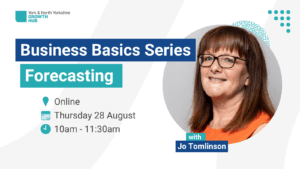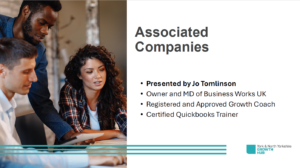Business Basics – How much is your Business Worth
Being aware of your business’s value enables you to determine a fair selling price for some or all of your shares, negotiate efficiently with prospective buyers, and secure beneficial financing deals, among other advantages.
By understanding how your business is valued, you can also employ strategies to maximise its value as part of an investment or exit strategy.
Fundamentally, a business is only worth what someone is prepared to pay for it, regardless of methodology, calculations or aspirations. However, there are a number of recognized methods of valuing businesses that you should consider.
Larger businesses, who are listed on the stock market are often valued in different ways, but we are only looking at SME businesses.
Business Valuation
Determining the monetary value of a business, taking into account a number of characteristics of the business.
A range of methods can be used. These methods each have their own strengths and weaknesses, and often a combination of methods with be used for a comprehensive view
- Profit Multiple Method – This is the most commonly used method. It takes a company’s operational profitability and multiplies it by a multiplier.
You may see the acronym EBITDA used a lot in business valuations, this is the technical term used for profitability and stands for Earnings before interest, tax, depreciation and amortization. As Depreciation and Amortization are non-cash numbers, stripping these out makes the profit more aligned to cash flow.
Other necessary adjustments to profit or EBITDA
- Owners’ compensation – The owner, or owners salaries need to be adjusted to reflect market rates
- Non-recurring transactions – Income or expenses that are not expected to recur in the future
- Related party transactions – these may not represent fair market value
The most common multiple for an SME business is between 2 and 5 times adjusted EBITDA, but multiples can go into double digit, depending on the industry and market conditions.
What effects the multiple:
- Size
- Risk
- Sector
- Growth rate and niche
- Revenue Multiple Method – uses an industry-specific multiplier and annual revenue.
As this method doesn’t take account of profit, it can be unreliable.
Some sectors use revenue multiples where the revenue is mostly re-occurring. This method may also be used if the business was to be merged with another, well established business, who already know how much profit they can make on the sales, so they are in effect buying a client base.
The multiple is typically around 0.5 to 2 when using the revenue multiple method and may exclude certain revenues.
- Entry Valuation Method – Based on the cost of creating a similar venture from scratch
Sometimes a buyer will look to purchase a business who is already established, rather than start a business doing the same or similar things. This could be due to time, expertise, or a license or something that the business has, that takes a significant amount of time to attain.
For your business to be competitively priced, it would need to cost less than a third party would pay to get to the same stage. So, look at the costs of acquiring the tangible assets, hiring and training the employees, establishing the customer base, developing the products and services etc
- Discounted Cashflow (DCF) – This method looks at future cash flows and assesses how much they would be worth today, using a discounting system. It is a sophisticated approach, and is typically used by established businesses with relatively predictable cash flows.
A discounting system is used to account for the time value of money, and further adjustments are likely to be made to take account of any risk factors.
The concept of the time value of money suggests that £1 earned today holds more value than £1 earned tomorrow due to its potential to earn returns.
Venture capitalists and Angel investors favor this method as it helps them predict when they can see a return on their investment.
The current value of future cash flows, discounted, as described above, is the value of the business.
- Asset valuation
Some businesses own substantial amounts of assets. These can range from property and land, through to intellectual property, like copyrights and patents.
Investment properties would be revalued each accounting period in the accounts, but other assets may not be. But you may want to regularly value the company’s assets, if this valuation method is to be used.
As this valuation method does not take account of goodwill, this method can often lead to the lowest value.
It is common to see an EBITDA or Revenue multiplier model used to value Goodwill and then to add the value of the other assets the business may hold, for example, any fixed assets, stock, cash and debtors, less the value of any liabilities, like creditors or outstanding loans.
Negotiation
As with many large ticket transactions, it is not unusual to negotiate around the price. A good deal is one that the buyer and the seller perceive to be fair. So, a written valuation is often the starting point around which to negotiate.
How to Maximise the value of your business
As a major factor impacting the valuation is risk, one of the best ways you can maximize the amount you get for your shares, or the whole of your business, is to reduce perceived risk.
- Quality of books and records – The messier the books are, the more risky the purchase is considered. You want to prove the business is profitable, and that transactions are transparent. You should use cloud accounting software and expect to show at least 3 years of financials as well as forecasts.
- Period of time trading – if your business is well established and has a long trading history. This will improve the perception of value
- Predictability – buyers love predictability. Repeat customers show strength. Retainers, subscriptions and relationships all have a positive impact on multiples.
- Growth – if the business can demonstrate consistent growth, then this has a really positive impact on value. As does available capacity for more growth and scalability.
- Owner Dependency – How involved in day to day running is the owner, or owners. A key person discount is often applied if the business can not run without the owner
- Systems, processes and procedures – for a business to run consistently and without the owner, there must be well established systems in place for running every aspect of the business
- Customer Base – buyers like a diversified customer base, rather than reliance on just one or two big customers (anything over 20% from one customer is a red flag)
- Unique Selling Proposition (USP) – How can you differentiate from your competitors, as differentiation allows for higher prices and better profits.
- Legal and Regulatory – Ensure your contracts are in place and up to date along with compliance to HR legislation, data handling and any industry compliance requirements
Timescales
Whether you are selling some or all of the shares in your business, you should expect to instruct legal experts to ensure you are protected, and also expect that the buyer will do their due diligence (a review of your records).
For SME’s the process of selling some or all of your shares can take 3-6 months or more.
The buyer
- Competition – sometimes your buyer will be your competitor. Rather than compete with you, if they merge with you, they avoid competition affecting profit, in both businesses.
- Affordability – the higher the value of your business, the lower the affordability pool of potential buyers. The more a buyer needs to rely on external finance, the lower the profit. Pus an impact on cash flow for repayments.
- Something money can’t buy – Do you have something that buyers want that they can’t readily acquire without buying your business?
- A license that takes months or years to get
- A product that is really difficult to make, but you know how to make it
- A customer or order
- Skills or knowledge generally
- Another barrier to entry
Internal Management tool
An accurate business valuation also serves as a guideline for the long term financial health of your business and its potential for long-term survival.
It illuminates your company’s strengths and weaknesses, thereby enabling you to make more strategic decisions in the future.
It’s like a health check-up for your business, giving you insights into its vitality and endurance over time.
Explore the Business Basics Series: Webinar Recordings & Blogs
Business Basics – Selling a Business or Shares in a Business
Being aware of your business's value enables you to determine a fair selling price for some or all of your shares and negotiate efficiently with prospective buyers. But where do you find a buyer for your shares, and what happens now?
Business Basics – How much is your Business Worth
Being aware of your business's value enables you to determine a fair selling price for some or all of your shares, negotiate efficiently with prospective buyers, and secure beneficial financing deals, among other advantages.
Business Basics - Forecasting
Although we don’t have a crystal ball, so forecasts are fundamentally informed guesses, businesses need to use them to make informed business decisions and develop business strategies.
Steps into Digital Programme
The Steps into Digital programme focusses on strategic, guided steps toward adopting the right digital tools and practices for your business. Emphasising a supportive, paced approach to digital transformation, accessible and manageable to all at any level.
Business Essentials – Associated Companies
From April 2023 the Corporation Tax rules changed, with the headline being an increase in the main rate of Corporation Tax to 25%. From this date, companies whose taxable profit was less then £50,000 would be subject to the small profit rate of 19% Corporation Tax. Companies with profits between £50,000 and £250,000 will pay a gradually increasing effective rate of taxation due to something known as marginal rate relief.
How to write a good business plan
Organisations such as the Start-Up Loan Company...
Four issues key to social enterprise survival
Social enterprises face a unique and complex series of issues. To ensure the long-term health and survival of your social enterprise, an understanding of these issues is vital. In this article, I will summarise four key areas you need to consider: sources of funding, governance considerations, the power of people, and sustainable growth.
Horizon Scanning: Four questions social enterprises need to answer
With so much going on in the present, it’s not always easy to look to the future. However, the identification of potential risks and opportunities is vital to the long-term health of any business, and social enterprises are no different. Horizon scanning helps in assessing whether you are adequately prepared for future changes or threats.
The Benefits of Local Business Networking
Building relationships with other businesses through local business networking can be incredibly rewarding on a personal level as well as a shrewd business decision. Forging friendships with other people, many
Supporting employee wellbeing in hybrid workplaces
The COVID-19 pandemic brought many challenges for workplaces. With many offices having to adjust to a partial / hybrid or full work from home (WFH) system, the need to protect
Why Business Continuity is Important
Preparing for the challenges a business might come up against when times get tough can seem like a mammoth task. You want to protect your business and guarantee that it
HR support for small businesses
From recruitment to payroll to offboarding – there are several key responsibilities of a human resources department that keep a business running smoothly. Of course, many small businesses don’t have












